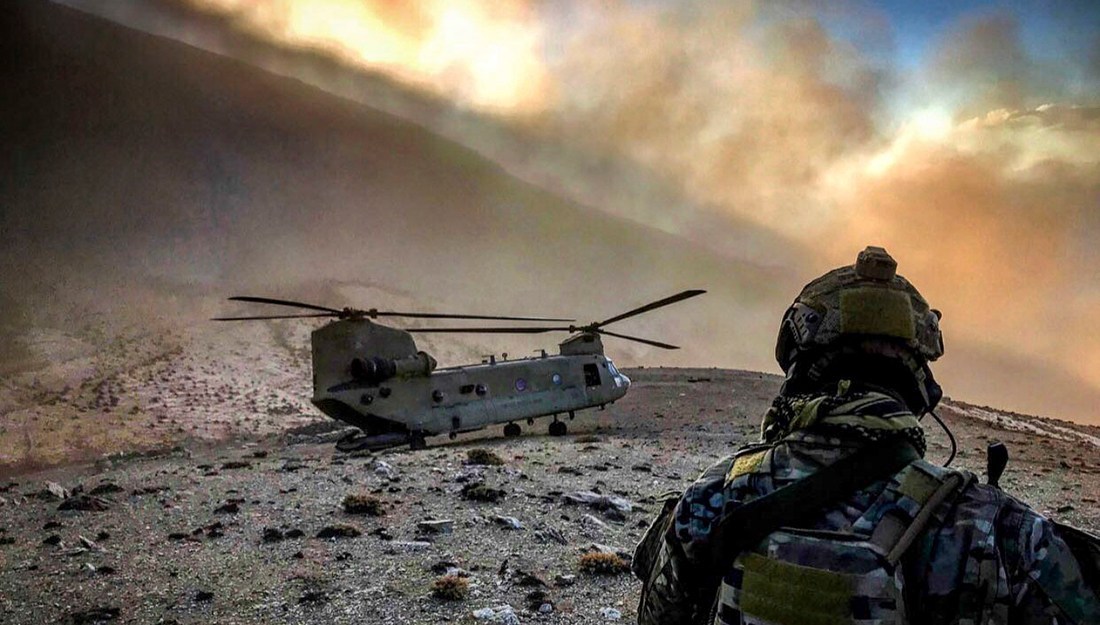- Home
- About
- Benefits & Services
- State Veterans Homes
- Nevada Veterans Memorial Cemeteries
- Community
- News
- Suicide Prevention
- Donate
- Fallen Heroes
- Nevada’s Veterans Memorials
- Calendar/Events
- Nevada Transition Assistance Program (NVTAP)

By Chuck N. Baker
(Nevada) — Depending on who one talks to, the Gulf War of 1990, goes by many names: The Persian Gulf War, the Gulf War, the First Gulf War, Desert Shield and Desert Storm (the latter being the Second Gulf War) and the “Mother of all Battles” according to the late Saddam Hussein.
Whatever it’s called, Nevada played a part in the Gulf War. According to Wikipedia, Gen. David L. Goldfein (then a Lt. Col.) flew combat missions out of Nellis AFB during the Gulf War. In addition, the aircraft known as the A-10 Thunderbolt II, stationed at Nellis, was first used in combat by Nellis pilots during the Gulf War in 1991. The twin engine aircraft was designed for close air support of ground forces, including tanks and armored vehicles, as well as infantry troops. Another Nellis-based aircraft used in the war was the F-15 Eagle, described as a supersonic, all-weather tactical fighter.
In August 1990, Iraqi leader Saddam Hussein invaded Kuwait. He conjured together many reasons to justify his actions, some real, some questionable. Perhaps his rationale could be traced to two topics — money (which he was short of) and oil, which was controlled in large part by operating the fields in Kuwait. International condemnation of the Iraqi invasion was widespread and virtually unanimous. Within days, the United States led efforts to organize an international coalition, which, working through the United Nations Security Council, passed Resolution 660 demanding Iraq’s immediate and unconditional withdrawal, Resolution 661 imposing economic sanctions, and Resolution 663 declaring the annexation of Kuwait null and void. Later Resolution 678 authorized the use of military force, and Hussein was pushed out of Kuwait. Major hostilities had began in January of 1991 and ended in February of 1991.
One of the after-effects of the war has come to be known as Gulf War Syndrome, illnesses reported by many returning soldiers. There is disagreement concerning the cause, including exposure to depleted uranium, chemical weapons, anthrax vaccines and other sources. The Department of Veterans Affairs has been treating many of those affected. Media wise, there are a large number of motion pictures (some factual, some fiction) that portray aspects of the war, including such oft-spoken titles as “Bravo Two Zero,” “Courage Under Fire,” “Live From Baghdad” and the 2004 version of “The Manchurian Candidate.” But the Gulf War and subsequent wars in the Middle East are beginning to wear on the public. Wars in Iraq, Afghanistan and Syria consume billions of dollars and cost the lives of American servicemen. As reporter Bonnie Kristian wrote in the Los Angeles Times last month, “Washington’s grand strategy of prioritizing global abstractions instead of U.S. security and prosperity will cost taxpayers nearly $1 trillion in 2010.” She further suggested that it’s time to bring the troops home and reorient foreign policy toward restraint and peace.
During the Revolutionary War, John Paul Jones is famous for his response to a request to surrender with “I have not yet begun to fight!” Some civilians and military alike feel that “I have not yet begun to fight” has run its course in the Middle East. We began to fight, and indeed we have fought. Now perhaps it’s time for fostering other battles that require our attention at home. But it must be stated that whichever which way we turn, America’s forces are ready to comply. The U.S. First Infantry Division, which has fought in the Middle East, has a motto of its own — “No mission too difficult, no sacrifice too great. Duty First.”